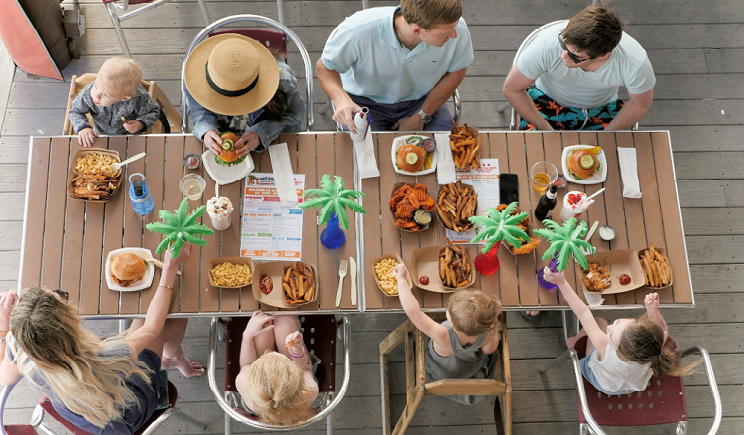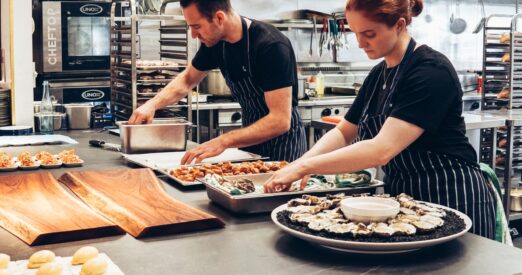
Why Restaurant AP and Restaurant Invoices are Different
by The Ottimate Editorial Team
Invoices are not unique to the restaurant industry — but restaurant AP departments have a unique problem dealing with restaurant invoices.
Every business that adds value to raw materials needs to buy those materials from vendors, which means each of those businesses has an accounts payable (AP) workflow to manage the process. For some businesses, specific vendors correlate to specific goods. Invoices come in a few times a week for materials that can be sold at a leisurely pace.
Not restaurants.

According to Ottimate’s internal data, the average restaurant location, every month, receives 214 invoices; makes 87 vendor payments; and reconciles 23 monthly statements. For businesses already stretched to the limit in terms of staffing and overhead costs, managing that volume of invoices — many of which are individually complex — adds a huge strain to the operation.
Though Ottimate has expanded into industries outside of hospitality, our AP automation platform was originally purpose-built to solve this very unique challenge. Here’s what makes the invoice process in restaurants different from your average business.
Restaurant AP Teams Deal with a High Volume of Restaurant Invoices
The number of invoices restaurants deal with is enormous. Not only are these businesses drowning under the volume of invoices cited above, but according to our internal data, the average restaurant’s volume of invoices is growing 13% year-over-year.
At many restaurants, the process for receiving, entering, approving, and paying invoices is inefficient — and given the growing volume, getting worse. Receipt happens under the supervision of whichever manager is there at the time of delivery; invoices get mailed, couriered, and emailed internally for approval and entry; and there’s no audit or visibility into workflow status. Invoices, essentially, pour into an opaque workflow that doesn’t scale.
Restaurant AP’s Solution
Restaurants need to centralize their invoice operation to reduce repetitive work and allow for better managerial visibility over invoices. In addition, these centralized operations need to be able to ingest invoices in bulk to ensure timely entry into and efficient management within the workflow.
Restaurant Invoices Have Diverse Contents
Many invoices tell you a lot simply by their header information. Once you see who the vendor is, the amount they charged, and so on, you have a pretty clear grasp of what the business bought and how the purchase should be accounted for.
Again: not so much for restaurants.
Some invoices are simple one-liners from the window cleaner or the electric company. But restaurants also have to deal with 100-item invoices from behemoth food distributors like Sysco and Reinhart — invoices that can individually contain everything from cleaning supplies to produce to PPE to alcohol. Just looking at the header information is not very helpful. These invoices need to be parsed by line item in order to be entered into the accounting system correctly.
Restaurant AP’s Solution
Typing in line-item information takes a long time and leads to inaccurate data. (Mistakes, after all, are inevitable.) Restaurant AP uses software to do it instead, automatically transcribing each line item and using past purchasing behavior to tag each item with the proper GL code. Automatic line-item coding is more accurate than manual coding, and saves dozens of hours of manual work per year.
Prices Change Frequently (and Sneakily)
Food and labor are two of the most volatile types of business expenses in our economy. With both of them essential inputs into operations (and both generally on the rise) restaurants need to stay on top of these fluctuating costs.
If it were just a matter of tracking one price’s rise and fall, it wouldn’t be that hard for operators to manage. But vendors are smart. They know how to play with prices so that margins shift around from one invoice to the next, and from one item to the next. If the price of lettuce lowers from invoice A to invoice B, maybe the price of carrots rises by the same amount. Without making it someone’s full-time job to track these prices, fluctuations go unnoticed and operator margins suffer.
Restaurant AP’s Solution
Software tracks prices better than humans can. Restaurant AP workflows help operators understand their costs by showing them price changes across time, locations, and vendors. This not only protects the operator’s margins, but helps them maintain a more informed relationship with their vendors in general.
Restaurant Invoices Change at the Last Minute
The goods that restaurants buy are often delicate things: perishable foods, glass-bottled drinks, in-demand specialty items. Vendors make an effort to get their invoices right, but inevitably, some of those items end up getting listed on the invoice but not actually delivered to the restaurant. As such, receiving managers have to make sure they edit any invoices that differ from the actual delivery, and any statements that differ from their own records.
Restaurant AP’s Solution
Since hand edits are a part of life in the world of restaurant invoices, the AP workflow needs to be able to transcribe that writing during the automation process. In addition, the system needs to maintain quick access to vendors to resolve statement discrepancies with minimum back-and-forth.
The Unique Challenge of Restaurant AP
In a business as unforgiving as restaurants, staying on top of costs is essential to running the kind of operation that can weather the headwinds we’re seeing in 2020-21. Restaurant AP saves time by automating critical parts of the invoice management process, but it also goes beyond that to help these margin-sensitive businesses understand exactly what’s changing about the inputs to their business, and how they can be improved.
Restaurants need all the help they can get in terms of insights, manpower, cost savings, and operational logistics. Restaurant AP blends all these needs into a workflow that takes on a critical area of a business, empowering the staff to attend to the endless other tasks involved in serving and delighting customers.
Learn more about how your restaurant AP team can benefit from choosing Ottimate by requesting a demo.
Stay up to date on the latest news in AP automation and finance
Related

